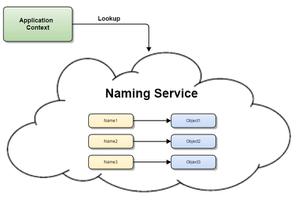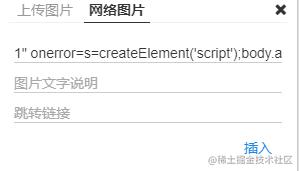检索每个组中的最后一条记录-MySQL
有一个messages包含数据的表,如下所示:
Id Name Other_Columns-------------------------
1 A A_data_1
2 A A_data_2
3 A A_data_3
4 B B_data_1
5 B B_data_2
6 C C_data_1
如果我运行查询select * from messages group by name,我将得到的结果为:
1 A A_data_14 B B_data_1
6 C C_data_1
什么查询将返回以下结果?
3 A A_data_35 B B_data_2
6 C C_data_1
即,应返回每个组中的最后一条记录。
目前,这是我使用的查询:
SELECT *
FROM (SELECT
*
FROM messages
ORDER BY id DESC) AS x
GROUP BY name
但这看起来效率很低。还有其他方法可以达到相同的结果吗?
回答:
MySQL 8.0现在支持窗口功能,就像几乎所有流行的SQL实现一样。使用这种标准语法,我们可以编写每组最多n个查询:
WITH ranked_messages AS ( SELECT m.*, ROW_NUMBER() OVER (PARTITION BY name ORDER BY id DESC) AS rn
FROM messages AS m
)
SELECT * FROM ranked_messages WHERE rn = 1;
以下是我在2009年为此问题写的原始答案:
我这样写解决方案:
SELECT m1.*FROM messages m1 LEFT JOIN messages m2
ON (m1.name = m2.name AND m1.id < m2.id)
WHERE m2.id IS NULL;
关于性能,一种解决方案可能会更好,这取决于数据的性质。因此,您应该测试两个查询,并使用给定数据库性能最好的查询。
例如,我有一个StackOverflow
August数据转储的副本。我将其用于基准测试。该Posts表中有1,114,357行。它在Macbook
Pro 2.40GHz的MySQL 5.0.75上运行。
我将编写查询以查找给定用户ID(我的用户)的最新帖子。
SELECT p1.postidFROM Posts p1
INNER JOIN (SELECT pi.owneruserid, MAX(pi.postid) AS maxpostid
FROM Posts pi GROUP BY pi.owneruserid) p2
ON (p1.postid = p2.maxpostid)
WHERE p1.owneruserid = 20860;
1 row in set (1 min 17.89 sec)
甚至EXPLAIN分析也要花费超过16秒的时间:
+----+-------------+------------+--------+----------------------------+-------------+---------+--------------+---------+-------------+| id | select_type | table | type | possible_keys | key | key_len | ref | rows | Extra |
+----+-------------+------------+--------+----------------------------+-------------+---------+--------------+---------+-------------+
| 1 | PRIMARY | <derived2> | ALL | NULL | NULL | NULL | NULL | 76756 | |
| 1 | PRIMARY | p1 | eq_ref | PRIMARY,PostId,OwnerUserId | PRIMARY | 8 | p2.maxpostid | 1 | Using where |
| 2 | DERIVED | pi | index | NULL | OwnerUserId | 8 | NULL | 1151268 | Using index |
+----+-------------+------------+--------+----------------------------+-------------+---------+--------------+---------+-------------+
3 rows in set (16.09 sec)
SELECT p1.postidFROM Posts p1 LEFT JOIN posts p2
ON (p1.owneruserid = p2.owneruserid AND p1.postid < p2.postid)
WHERE p2.postid IS NULL AND p1.owneruserid = 20860;
1 row in set (0.28 sec)
该EXPLAIN分析表明,这两个表都能够使用他们的指标:
+----+-------------+-------+------+----------------------------+-------------+---------+-------+------+--------------------------------------+| id | select_type | table | type | possible_keys | key | key_len | ref | rows | Extra |
+----+-------------+-------+------+----------------------------+-------------+---------+-------+------+--------------------------------------+
| 1 | SIMPLE | p1 | ref | OwnerUserId | OwnerUserId | 8 | const | 1384 | Using index |
| 1 | SIMPLE | p2 | ref | PRIMARY,PostId,OwnerUserId | OwnerUserId | 8 | const | 1384 | Using where; Using index; Not exists |
+----+-------------+-------+------+----------------------------+-------------+---------+-------+------+--------------------------------------+
2 rows in set (0.00 sec)
这是我的Posts桌子的DDL :
CREATE TABLE `posts` ( `PostId` bigint(20) unsigned NOT NULL auto_increment,
`PostTypeId` bigint(20) unsigned NOT NULL,
`AcceptedAnswerId` bigint(20) unsigned default NULL,
`ParentId` bigint(20) unsigned default NULL,
`CreationDate` datetime NOT NULL,
`Score` int(11) NOT NULL default '0',
`ViewCount` int(11) NOT NULL default '0',
`Body` text NOT NULL,
`OwnerUserId` bigint(20) unsigned NOT NULL,
`OwnerDisplayName` varchar(40) default NULL,
`LastEditorUserId` bigint(20) unsigned default NULL,
`LastEditDate` datetime default NULL,
`LastActivityDate` datetime default NULL,
`Title` varchar(250) NOT NULL default '',
`Tags` varchar(150) NOT NULL default '',
`AnswerCount` int(11) NOT NULL default '0',
`CommentCount` int(11) NOT NULL default '0',
`FavoriteCount` int(11) NOT NULL default '0',
`ClosedDate` datetime default NULL,
PRIMARY KEY (`PostId`),
UNIQUE KEY `PostId` (`PostId`),
KEY `PostTypeId` (`PostTypeId`),
KEY `AcceptedAnswerId` (`AcceptedAnswerId`),
KEY `OwnerUserId` (`OwnerUserId`),
KEY `LastEditorUserId` (`LastEditorUserId`),
KEY `ParentId` (`ParentId`),
CONSTRAINT `posts_ibfk_1` FOREIGN KEY (`PostTypeId`) REFERENCES `posttypes` (`PostTypeId`)
) ENGINE=InnoDB;
以上是 检索每个组中的最后一条记录-MySQL 的全部内容, 来源链接: utcz.com/qa/411794.html







